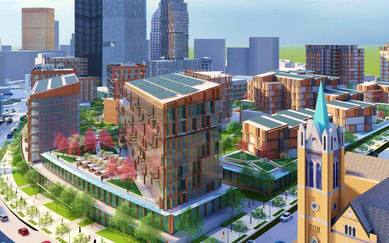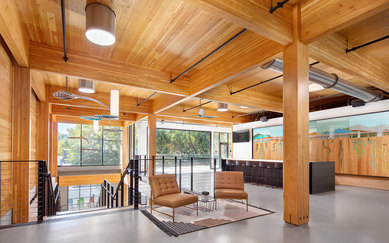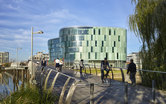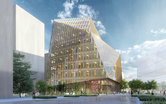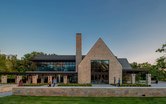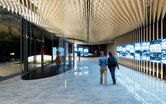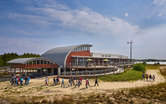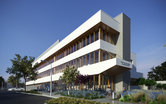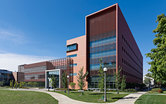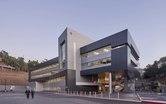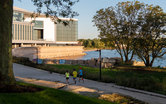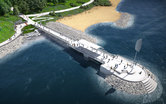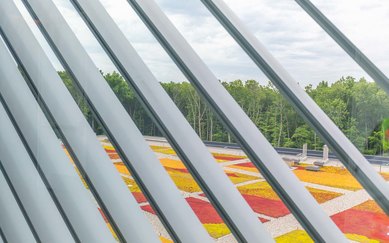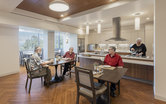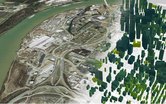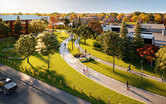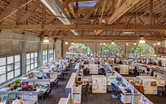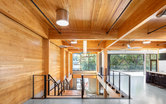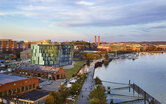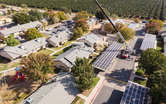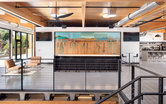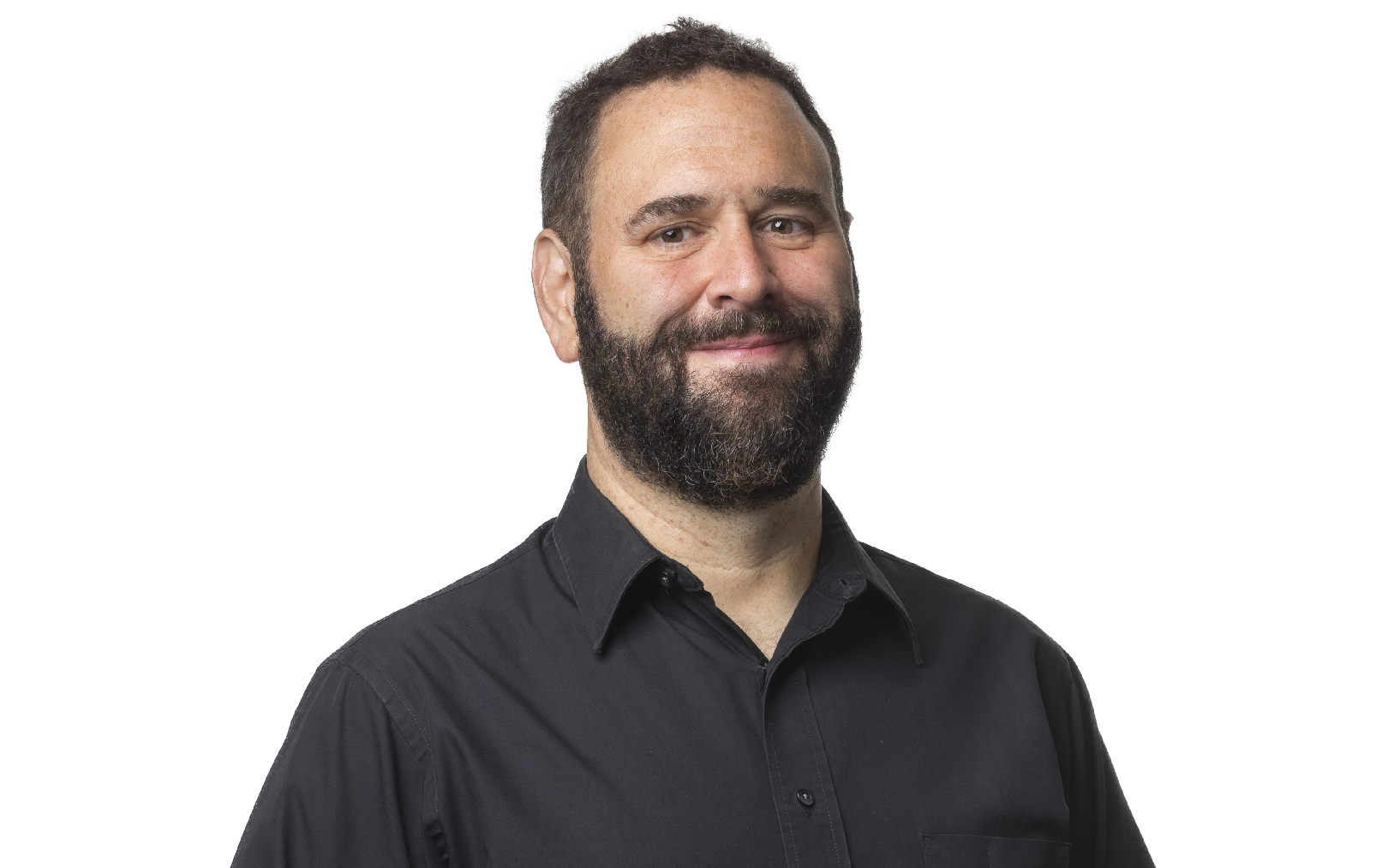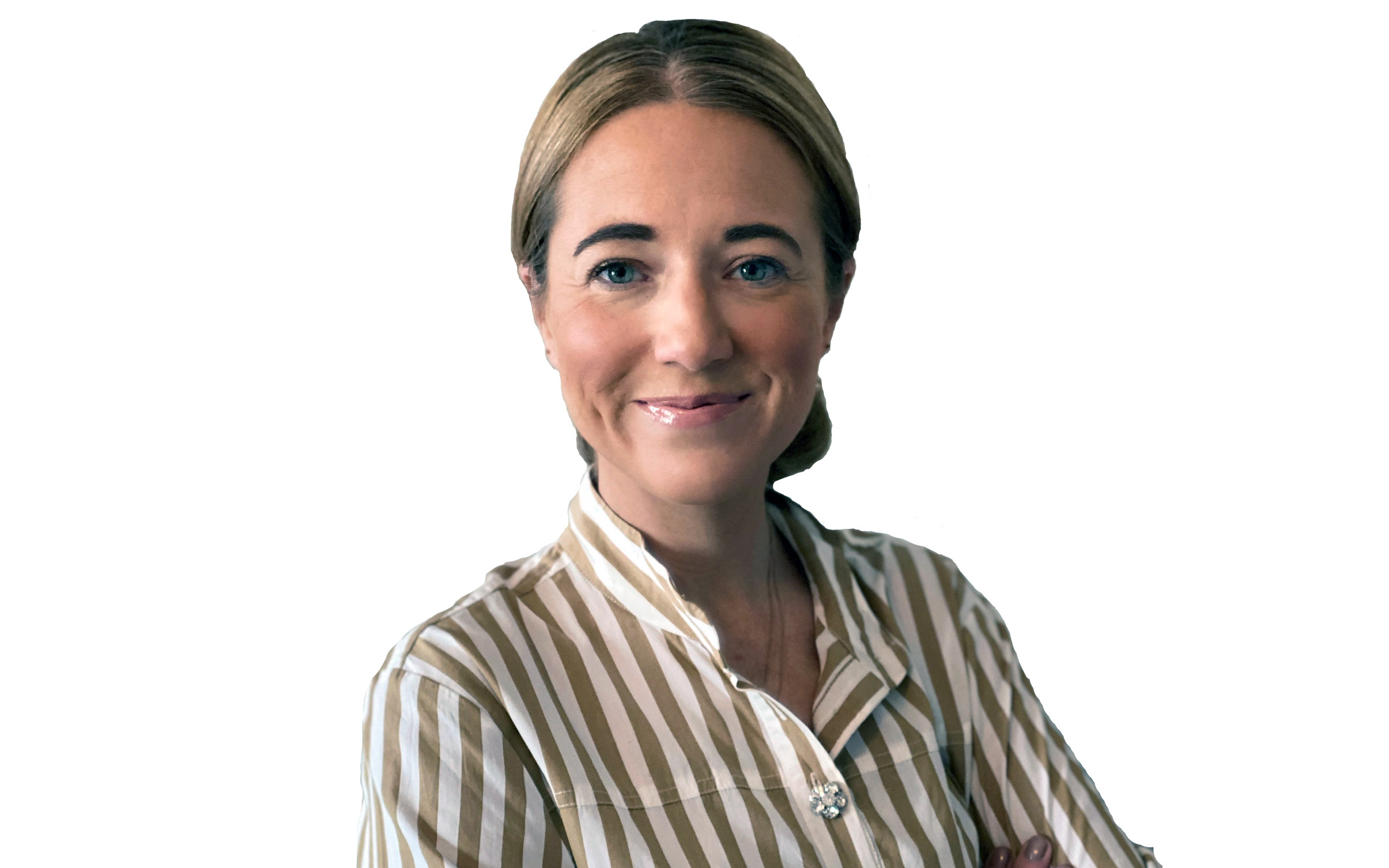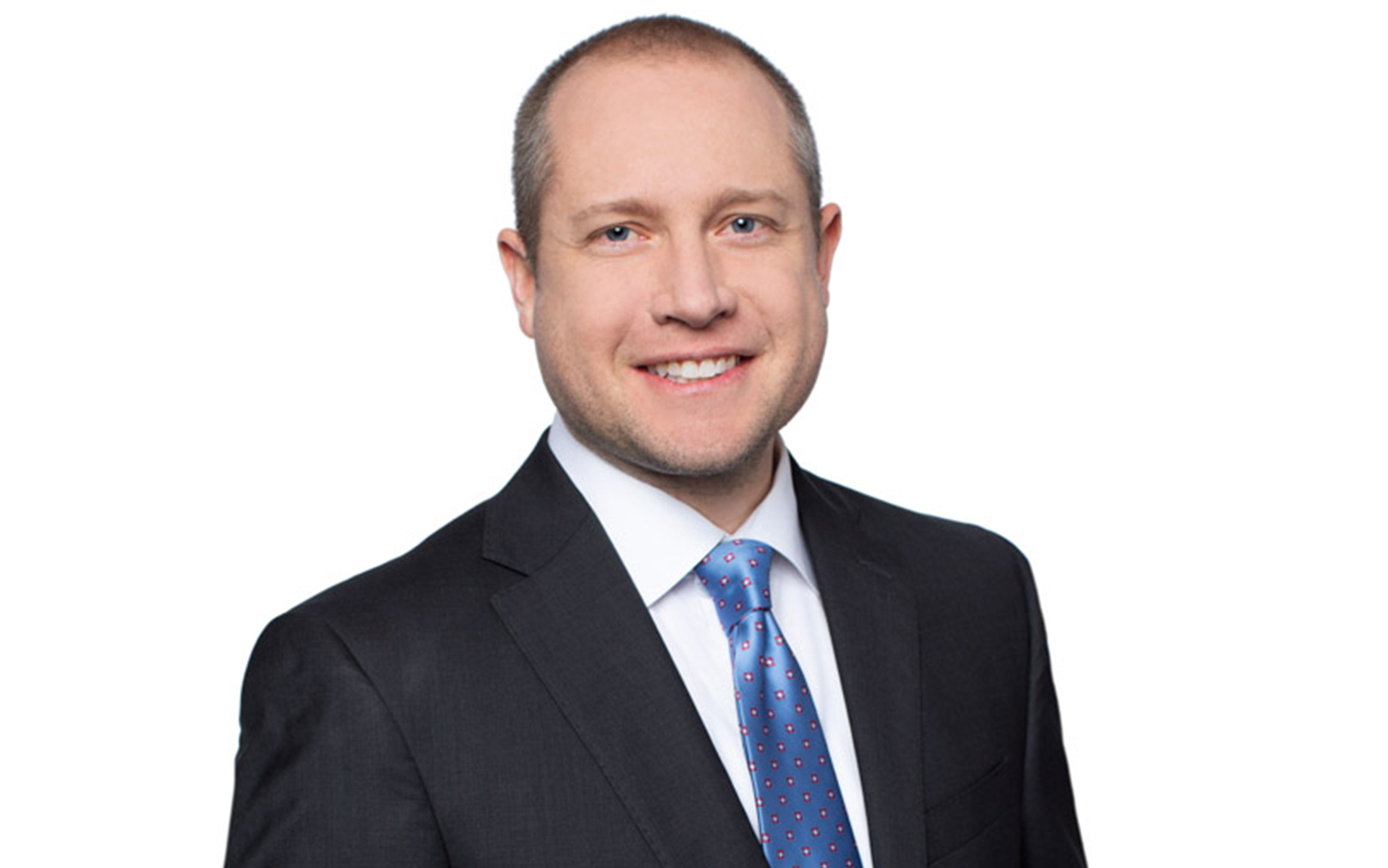
MEETING THE CHALLENGE
With the world facing an urgent climate crisis, SmithGroup has deepened our commitment to climate action. 2030 remains a pivotal year in global carbon reductions for a measurable reason: designing and building as usual will take us past critical emission thresholds and worsen climate change impacts. SmithGroup is committed to meeting these challenges through bold, transformational changes in how we design, construct and advocate for the built and natural environments. We are leveraging our passion for innovation and integrated design to make more decarbonization and adaptation progress faster - and to make sure our climate action efforts holistically serve our communities, businesses and institutions.
OUR THREE PRIORITIES
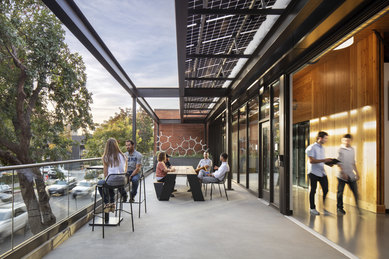
1. Accelerate Gains in Operational Performance
The construction and operation of buildings and the built environment account for nearly 40% of global carbon emissions. SmithGroup is leveraging an innovative performance-based design workflow, applying cutting-edge technology and advanced computational modeling techniques to achieve net-zero energy design for all our active projects by the end of the decade.
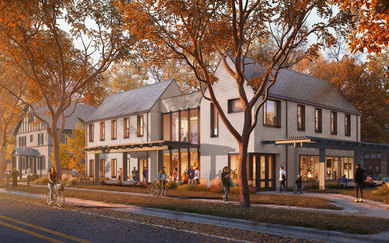
2. Reduce Life-Cycle Carbon Emissions
If current trends continue, embodied carbon (the emissions from extracting, manufacturing, transporting, installing, and demolishing building and construction materials) will account for 60% of global carbon emissions by 2050. SmithGroup is helping to expand our industry’s focus on addressing the full life-cycle carbon footprint of our designs, by fostering transitional approaches to circular and living systems of economy and scale.
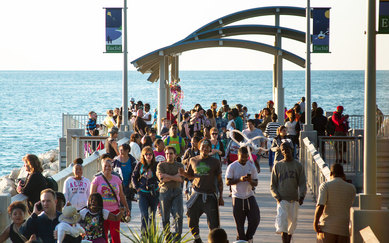
3. Increase Community Well-Being Through Resilient Design
The adverse effects of an already altered climate continue to intensify—from unprecedented heat waves, droughts, and wildfires to catastrophic flooding and habitat loss. These shocks and stresses are having a growing impact on our communities – with an undeniable link between poverty, health, and climate vulnerabilities. SmithGroup seeks to emphasize an intersectional framework for resilient and equitable design decisions – managing our clients’ risk while enhancing community well-being and livability.
EXPANDING OUR IMPACT WITH PACT
SmithGroup’s new Performance Analytics & Climate-Impact Team (PACT) is a national group of experts advancing parametric modeling and analysis, quantified performance evaluation and an integrated design workflow. Our firm’s signature on AIA 2030, MEP 2040, SE 2050 and other industry climate commitments represents a shared promise to our peers and our clients. PACT is advancing the speed and rigor with which we can meet those commitments by defining the leading edge of net-zero strategy and design. PACT’s core focus is applying data solutions to the design space, including automating workflows to provide rapid-paced impact analysis. The team also uses this analysis to provide decarbonization and resilience solutions at a comprehensive range of scales. Their work leverages large-scale datasets that encompass single buildings and sites as well as districts, campuses, cities, utilities and clients with national portfolio holdings. Team leaders are also actively engaged in research and policy collaborations with industry partners and peers to increase transparency around open-source climate solutions.
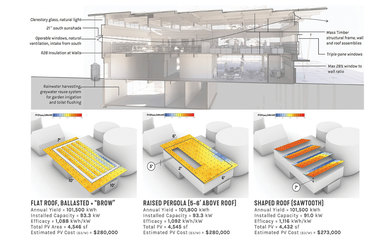
Building on SmithGroup’s history of next-generation energy designs and innovative waste-heat recovery practices, PACT aims to improve performance and maximize carbon reductions by leveraging state-of-the-art analytics, computational modeling and technological innovation.
REALIZING NEW SUSTAINABLE SOLUTIONS
While many design firms are focused on fixing the old, SmithGroup’s teams apply research-driven insight to develop and deploy smarter ways of attacking climate problems – including better use of onsite resources, and decentralizing infrastructure designs through building infrastructure integration. We know that new thinking and practice hold the key to our decarbonized future. We also know that many co-benefits can be realized when we design for both reduced carbon and increased resilience. That’s why our work is leading to innovative approaches that are fostering larger scales of collaboration, impact and benefit.
Duquesne Light Company - Decarbonization Strategy and Smart Electric Energy District (SEED)
Duquesne Light Company (DLC) is an electric utility in the Pittsburgh region serving 600,000 customers. Founded in 1912, DLC is one of the nation’s oldest electric utilities – and has long been at the forefront of navigating major changes in energy supply, demand and policy. SmithGroup worked with DLC to evaluate and develop strategies for renewable energy, distributed energy, and electrification that will help the utility advance their strong commitments to energy innovation, including equity, grid modernization, and decarbonization.
DESIGNING SOLUTIONS
DPR Construction Sacramento Office
With Net Zero Energy (NZE) becoming a requirement for all commercial buildings in California by 2030, DPR partnered with SmithGroup to meet and exceed this mandate in designing its new Sacramento office. This new space exceeds regulatory requirements, targeting Net Positive Energy, while creating a resilient work environment that fosters collaboration, innovation and connection to the surrounding community.
Practicing a Culture of Climate Action
At SmithGroup, we practice a culture of commitment to a carbon positive future—both in how we approach design and in how we operate. Our commitment attracted engineering discipline leader Stet Sanborn and landscape architect Kendra Hyson to SmithGroup where they each have found paths to achieving greater climate action in their roles.
THOUGHT LEADERSHIP & NEWS
SmithGroup Achieves Carbon Neutral Operations
SmithGroup is now officially carbon neutral across its 18 domestic offices. It is also advancing a firmwide Climate Action Plan to further refine decarbonization of its operations, and to accelerate its meeting of major industry climate action commitments, including AIA 2030, MEP 2040, and SE2050.
Greg Mella, Vice President
Corporate Director of Sustainability
greg.mella [at] smithgroup.com (Email)
(202) 974-5187
Katrina Kelly-Pitou, Principal
PACT Co-Leader
katrina.kellypitou [at] smithgroup.com (Email)
(313) 442-8299
Stet Sanborn, Vice President
PACT Co-Leader
stet.sanborn [at] smithgroup.com (Email)
(415) 343-2032
